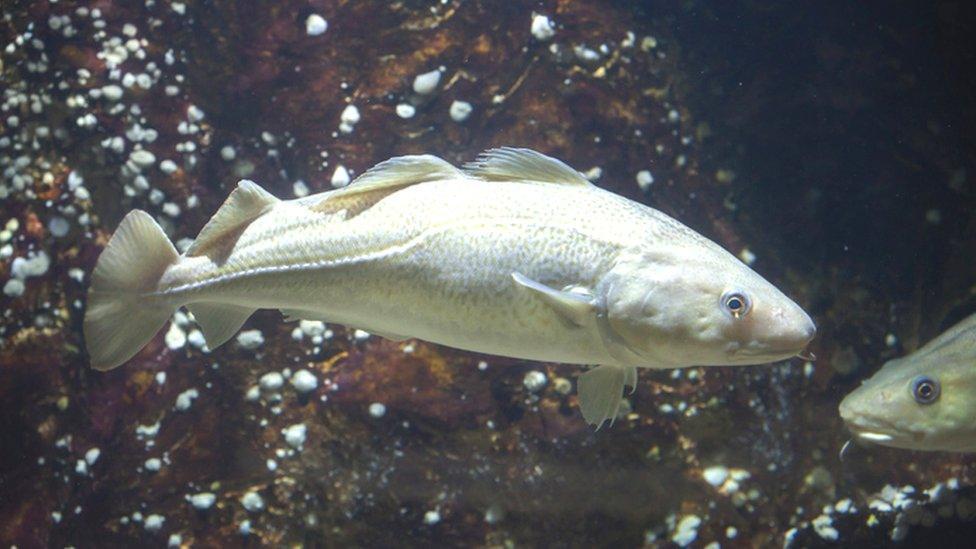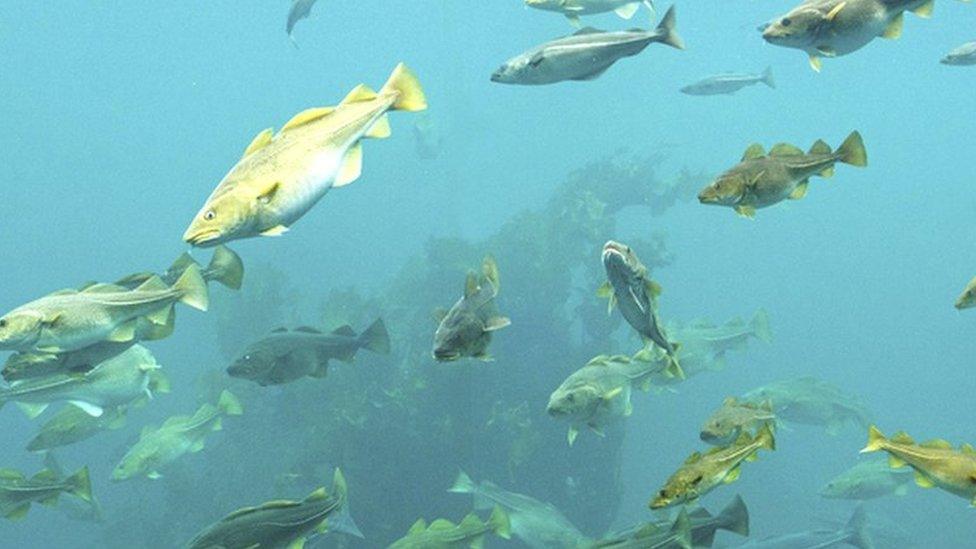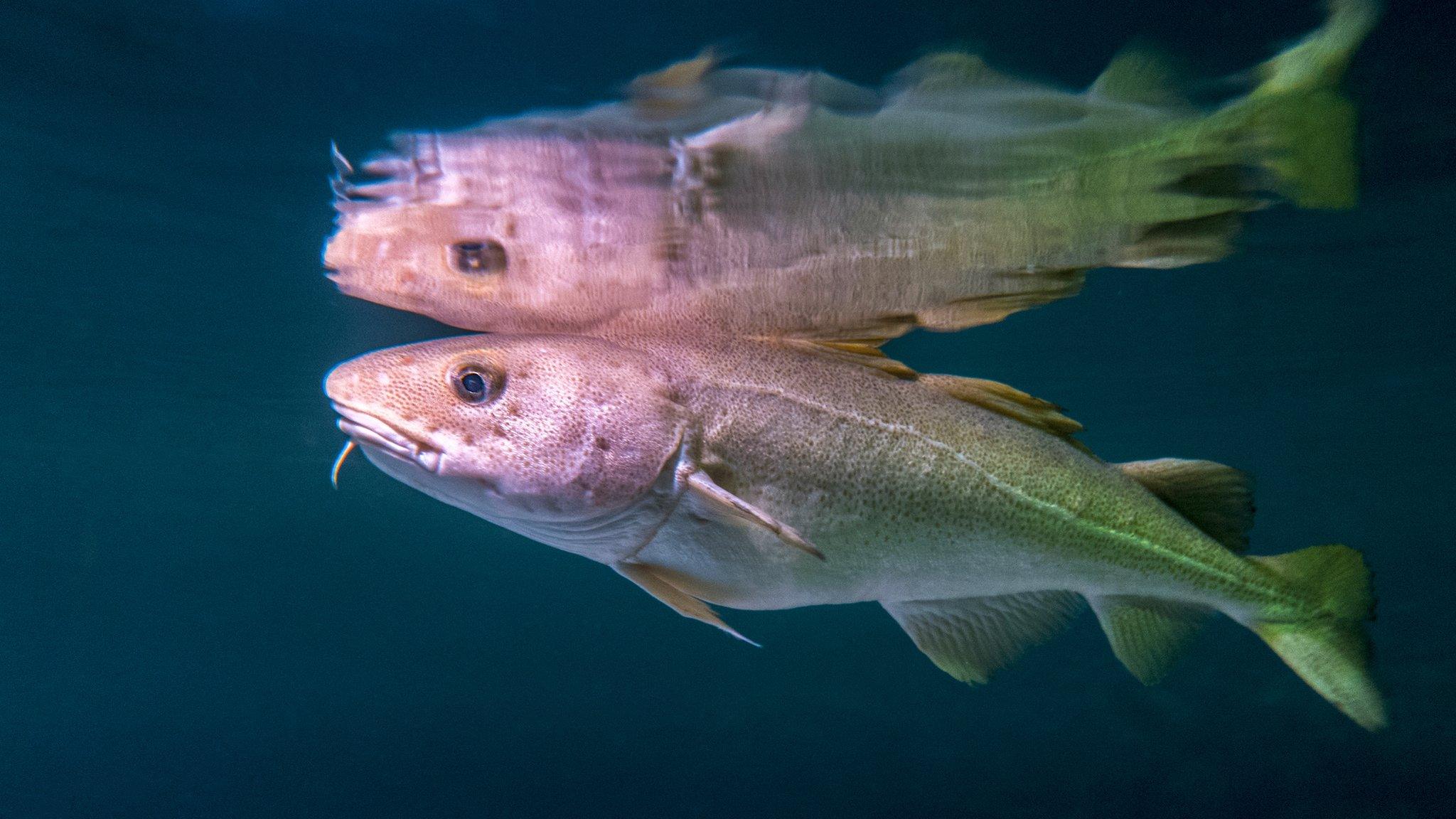Ministers accused of U-turn on cod protection area
- Published

A conservation group has criticised the Scottish government for scaling back on the size of a seasonal protection area for cod in the Firth of Clyde.
Ministers recently announced they were ending exemptions allowing langoustine trawlers, creels and scallop dredgers to use the Clyde Cod Box area during the approaching spawning season.
But they later cut the size of the area compared with previous years by 28%.
Open Seas said it was a "depressing U-turn" on plans to recover cod stocks.
But Rural Affairs Secretary Mairi Gougeon said the revised closure areas were "a pragmatic and evidence-based solution".
For the past two decades, measures to protect spawning cod in the Firth of Clyde have been in place through an annual 11-week seasonal closure between 14 February and 30 April.

Measures to protect spawning cod in the Firth of Clyde have been in place for two decades
The decision to scale back on the closure areas came after the government held discussions with stakeholders.
Ministers faced heavy criticism from fishermen's groups, who argued that the ending of exemptions for the 2022 and 2023 seasons would have "a horrific impact" on local fishing families.
'Deeply disappointed'
In a statement following the revision of closure areas, Open Seas said: "We are deeply disappointed that Scottish ministers have made a depressing U-turn on their plans to recover cod.
"This not only threatens the purpose of the seasonal closure, it also flies in the face of ministers' own rhetoric to provide 'maximum protection' to spawning cod.
"Evidence shows that bottom trawlers fishing largely for the scampi market bycatch large numbers of cod in this area and during the spawning season.
"The proposals now put forward by Scottish ministers will effectively allow much of this activity to continue as it has done for the past two decades.
"Moreover the measures unfairly ban lower impact fisheries, such as creeling and diving, that cause significantly less disturbance to spawning cod."
'Pragmatic solution'
Rural Affairs Secretary Mairi Gougeon said the government had listened to the concerns of all of stakeholders involved and taken them on board.
"As a result of these discussions and based on the scientific evidence, we have introduced closures that are more focused and targeted, reducing the overall size of the closure compared to previous years by 28%," she said.
"However, this part of the Clyde area will still largely be closed to all fishing, eliminating disturbance during these critical 11 weeks for future cod stocks.
"We will continue our engagement with all parties involved and increase monitoring of activity in order to assess progress."
She added: "The revised closure areas are a pragmatic and evidence-based solution to ensure that primarily, we are still seeking to protect the spawning cod whilst also mitigating potential socio-economic impacts on our vulnerable coastal communities."
Related topics
- Published13 January 2022
